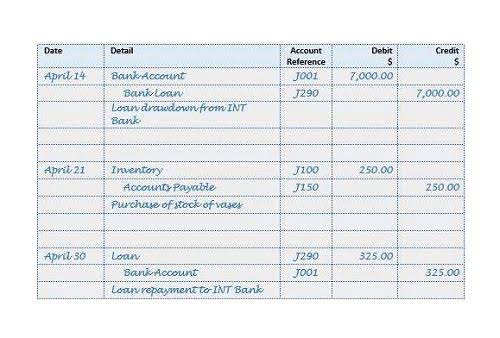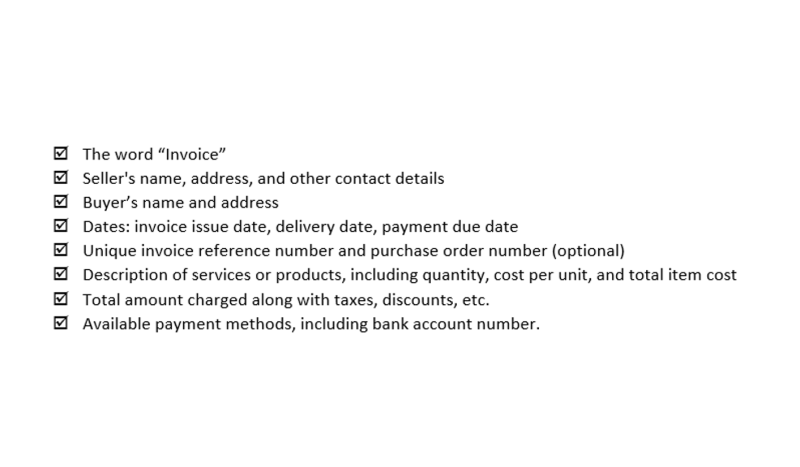Depreciable vs Non-depreciable Assets: Where Should I Invest? Center for Agricultural Profitability

Sum-of-years-digits is a spent depreciation method that results in a more accelerated write-off than the straight-line method, and typically also more accelerated than the declining balance method. Under this method, the annual depreciation is determined by multiplying the depreciable cost by a schedule of fractions. Since double-declining-balance depreciation does not always depreciate an asset fully by its end of life, some methods also compute a straight-line depreciation each year, and apply the greater of the two. This has the effect of converting from declining-balance depreciation to straight-line depreciation at a midpoint in the asset’s life.
- This chapter discusses the deduction limits and other special rules that apply to certain listed property.
- Instead, it sells them through wholesalers or by similar arrangements in which a dealer’s profit is not intended or considered.
- In the following example, we will highlight a few things to think about.
- This accounting technique is designed to provide a more accurate depiction of the profitability of the business.
- Therefore, the effects of common share equivalents are excluded from the calculation of diluted loss per share for these periods because they would be antidilutive.
- Thus, the IFRS and the GAAP allow companies to allocate the costs over several periods through depreciation.
This is a racing track facility permanently situated on land that hosts one or more racing events for automobiles, trucks, or motorcycles during the 36-month period after the first day of the month in which the facility is placed in service. The events must be open to the public for the price of admission. The following is a list of the nine property classifications under GDS and examples of the types of property included in each class. These property classes are also listed under column (a) in Section B of Part III of Form 4562. For detailed information on property classes, see Appendix B, Table of Class Lives and Recovery Periods, in this publication. The following are examples of some credits and deductions that reduce depreciable basis.
What Is Rental Property Depreciation?
We believe NOI is helpful to management and investors as a measure of operating performance because it is an indicator of the return on property investment, and provides a method of comparing property performance over time. We believe that net loss is the most directly comparable GAAP measure to NOI. You use an item of listed property 50% of the time to manage your investments. You also use the item of listed property 40% of the time in your part-time consumer research business. Your item of listed property is listed property because it is not used at a regular business establishment. You do not use the item of listed property predominantly for qualified business use.
These calculations must make assumptions about the date of acquisition. One half of a full period’s depreciation is allowed in the acquisition period (and also in the final depreciation period if the life of the assets is a whole number of years). United States rules require a mid-quarter convention for per property if more than 40% of the acquisitions for the year are in the final quarter. Many systems allow an additional deduction for a portion of the cost of depreciable assets acquired in the current tax year. The UK system provides a first-year capital allowance of £50,000. A deduction for the full cost of depreciable tangible personal property is allowed up to $500,000 through 2013.
MACRS Worksheet
The election must generally cover all property in the same property class that you placed in service during the year. However, the election for residential rental property and nonresidential real property can be made on a property-by-property basis. Any cost not deductible in 1 year under section 179 because of this limit can be carried to the next year. Special rules apply to a deduction of qualified section 179 real property that is placed in service by you in tax years beginning before 2016 and disallowed because of the business income limit. See Special rules for qualified section 179 real property under Carryover of disallowed deduction, later. You must continue to use the same depreciation method as the transferor and figure depreciation as if the transfer had not occurred.
Accumulated depreciation on any given asset is its cumulative depreciation up to a single point in its life. RoundingCertain summarized information in the tables included may not total due to rounding. It is often not an either/or decision in terms of acquiring the right to use an asset.
How Does Depreciation Differ From Amortization?
You determine the midpoint of the tax year by dividing the number of days in the tax year by 2. If the result of dividing the number of days in the tax year by 2 is not the first day or the midpoint of a month, you treat the property as placed in service or disposed of on the nearest preceding first day or midpoint of a month. You multiply the reduced adjusted basis ($288) by the result (40%). You multiply the reduced adjusted basis ($480) by the result (28.57%). You reduce the adjusted basis ($1,000) by the depreciation claimed in the first year ($200).
For more information on how to choose a tax preparer, go to Tips for Choosing a Tax Preparer on IRS.gov. You can prepare the tax return yourself, see if you qualify for free tax preparation, or hire a tax professional https://www.bookstime.com/ to prepare your return. Although you must generally prepare an adequate written record, you can prepare a record of the business use of listed property in a computer memory device that uses a logging program.
What Is Depreciation?
The first recovery year for the 5-year property placed in service during the short tax year extends from August 1 to July 31. Tara deducted 5 months of the first recovery year on its short-year tax return. Seven months of the first recovery year and 5 months of the second recovery year fall within the next tax year. The depreciation for the next tax year is $333, which is the sum of the following. Under the allocation method, you figure the depreciation for each later tax year by allocating to that year the depreciation attributable to the parts of the recovery years that fall within that year. Whether your tax year is a 12-month or short tax year, you figure the depreciation by determining which recovery years are included in that year.

MACRS provides three depreciation methods under GDS and one depreciation method under ADS. However, a qualified improvement does not include any improvement for which the depreciable expenditure is attributable to any of the following. If you placed your property in service in 2022, complete Part III of Form 4562 to report depreciation using MACRS.
Depreciation, Depletion, and Amortization (DD&A): Examples
It is tangible personal property generally used in the home for personal use. It includes computers and peripheral equipment, televisions, videocassette recorders, stereos, camcorders, appliances, furniture, washing machines and dryers, refrigerators, and other similar consumer durable property. Consumer durable property does not include real property, aircraft, boats, motor vehicles, or trailers. Your use of either the General Depreciation System (GDS) or the Alternative Depreciation System (ADS) to depreciate property under MACRS determines what depreciation method and recovery period you use. You must generally use GDS unless you are specifically required by law to use ADS or you elect to use ADS. For qualified property other than listed property, enter the special depreciation allowance on Form 4562, Part II, line 14.
This chapter explains what property does and does not qualify for the section 179 deduction, what limits apply to the deduction (including special rules for partnerships and corporations), and how to elect it. Several years ago, Nia paid $160,000 to have a home built on a lot that cost $25,000. Before changing the property to rental use last year, Nia paid $20,000 for permanent improvements to the house and claimed a $2,000 casualty loss deduction for damage to the house. Land is not depreciable, so Nia includes only the cost of the house when figuring the basis for depreciation. You figure your share of the cooperative housing corporation’s depreciation to be $30,000.
